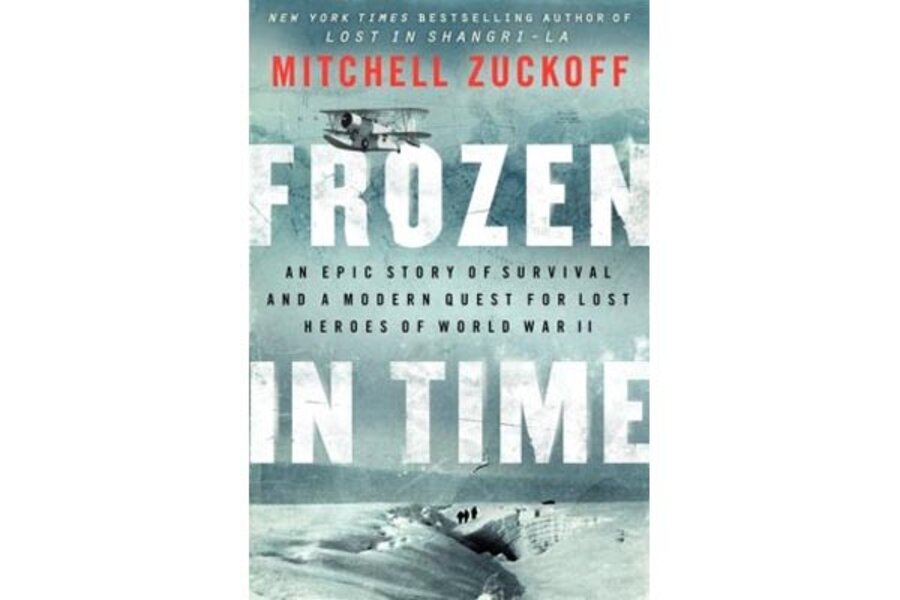Frozen in Time
Loading...
“Cold in Greenland is almost a living thing, a tormenting force that robs strapping men of strength, denies them rest, and refuses them comfort. In time, it kills like a python, squeezing life from its victims.” Brrr! I took another sip of my cocoa and huddled closer under my warm blankets. Things get heavy quickly in Mitchell Zuckoff’s Frozen in Time: An Epic Story of Survival and a Modern Quest for Lost Heros of World War II.
The book is a nonfiction account of a botched World War II rescue attempt that left nine men stranded on a Greenland glacier in the back half of a B-17 bomber. The winter months – replete with crushing cold, storms, and little daylight – strangled hope for a quick rescue. Zuckoff jumps between 1942 and 2012, telling the harrowing story of the survivors and, much less compellingly, the story of a modern recovery operation, of which he was a part.
One thing you should understand about Greenland is that it is cold and big. Very cold and very big. It’s so cold there that snow huddles together for warmth, creating huge glaciers that flow like rivers of ice to the sea. If you count the cold as a character, then “Frozen in Time” is a character-driven story.
One Coast Guard plane, a Grumman Duck (think bi-plane that can land in water), actually managed to land on the crevasse-ridden glacier – a near impossible feat – and cart two of the men back to safety. On their second attempt, they landed and got one more on board, but horrible weather got the best of them as they flew back and they crashed. The original nine were down to six. The patient cold slowly chipped away at that number.
The men took shelter in the tail section of their B-17, which sat precariously on the edge of a crevasse. No one seriously thought they would make it through the month.
The Duck is the plane that got the 2012 story line rolling. Zuckoff met a man named Lou Sapienza, who was determined to bring that crashed Duck back from Greenland, despite the fact that it had been lost to the ages and was probably covered by 30 feet of snow.
Cliffhangers literal and figurative move the action along nicely. Zuckoff, a former Boston Globe reporter and author of 2011 bestseller "Lost in Shangri-La," has a writing style that is clean and occasionally poetic. The huge cast of characters and jumps in setting rarely overwhelm in the 1942 thread. Characters are introduced intermittently so you don’t have to learn everyone’s name all at once (unfortunately the same can’t be said of the 2012 storyline). If you do lose track, there’s a handy list of characters in the back.
Like any good filmmaker, Zuckoff shows different angles of these men’s lives, compelling life back into their lost story. I felt as if I were right there with them, eating K-rations and slowly losing hope of rescue in the long Greenland nights.
The book flounders when Zuckoff attempts to weave the 1942 and the 2012 stories together – mostly because the 2012 recovery op doesn’t have the dramatic tension to provide a counter weight to the harrowing story of the men in 1942. The modern bits felt more like a diary than a reported story.
At one point Zuckoff mentions that he personally funded the 2012 expedition, and a lot of his writing decisions suddenly made sense. Most of the drama in the modern sections of the story is built around the uncertain funding, but we already know there’s going to be an expedition. The funding meetings and discussions could have all been summarized into one chapter and never mentioned again, and I wouldn’t have minded. Leaving them in made it feel as if the author were vindicating his actions – and it really slowed down the narrative.
Despite the personal investment by the author in the modern third, the 1942 storyline is extremely compelling/absorbing/exciting/engaging (pick your critical buzzword). The remarkable tale of perseverance in the face of unimaginable odds is not in the least overshadowed by the modern storyline.
Zuckoff is a masterful writer when he keeps a journalistic distance from his subjects and allows his research to speak for itself, but a memoirist he ain’t.
-Ben Frederick is a contributor to The Christian Science Monitor









